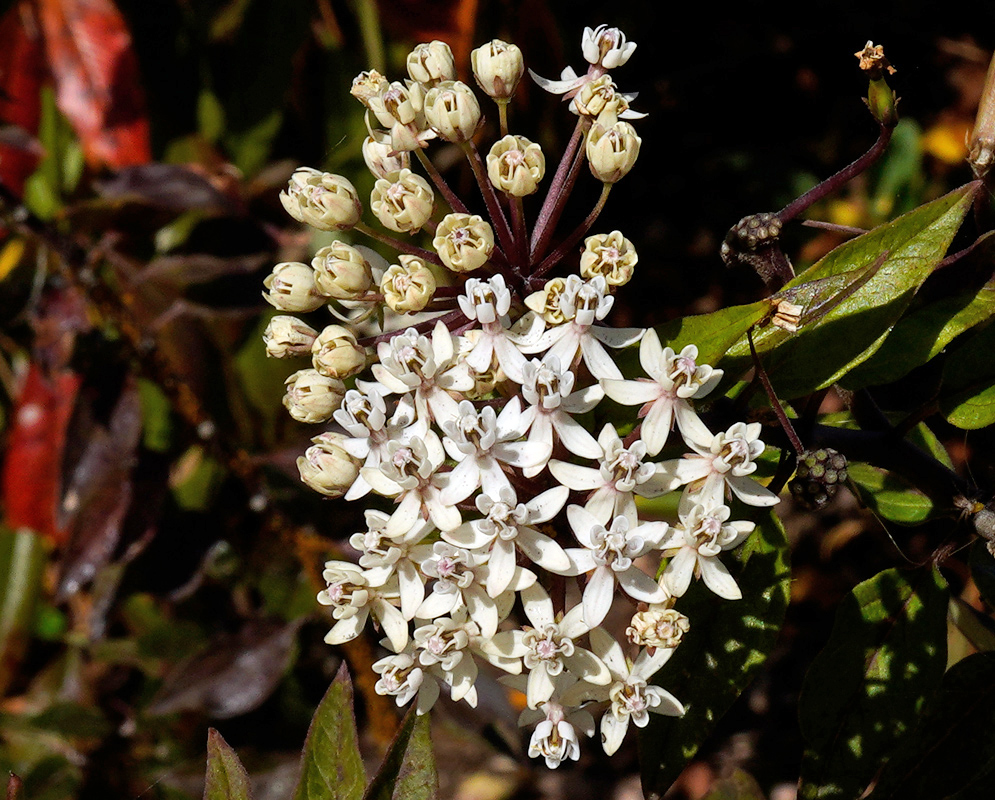This post has 11 Simple Fields-fields attached. Show fields.

Native to the rocky uplands of central and west-central Texas, Asclepias texana, known as Texas milkweed, is a perennial wildflower adapted to dry, calcareous soils often found on limestone outcrops, slopes, and canyons. This species thrives in open woodlands and sunny clearings, typically between 1,000 and 3,000 feet in elevation. Its growth habit includes erect, slender stems reaching 1–3 feet in height, producing terminal umbels composed of small white flowers with a faint pink blush at the hoods. Flowering occurs mainly from late spring through midsummer, attracting a wide range of pollinators.
Unlike many milkweeds, Asclepias texana is well adapted to drought, with deep roots allowing it to persist in harsh summer heat. It produces a milky latex sap, a trait characteristic of the group, which contains toxic cardenolides that deter herbivory. Its specialized floral structure requires pollinators to insert their legs into slits in the corona to extract pollinia, making pollination dependent on the behavior and size of visiting insects. Photographed in Virginia.

